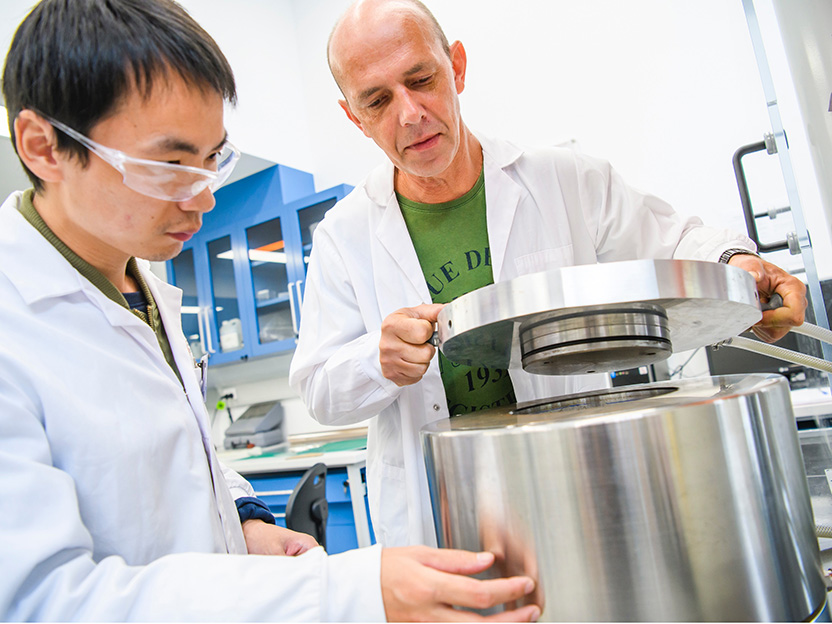The transition to Net Zero requires more of metals such as copper, rare earth elements and cobalt than are currently available from known types of mineral deposits, so new ones need to be found. The more we know about the different ways in which these minerals might be formed, the more likely it is that we can find new sources that may not yet have been explored.
The researchers’ most recent findings, published in Nature, build on earlier work from ANU, Geoscience Australia and their collaborators from Cambridge and Harvard Universities, that found that critical metals appear to have accumulated close to the edges of dense, heavy parts of the continental crust called cratons.
Molten rock (‘melts’) in the Earth’s mantle flows upwards and outwards around the edges of these cratons towards the surface, making volcanic activity more common there.
A team led by Dr Chunfei Chen conducted lab-based high-pressure experiments that enabled them to identify the mechanisms by which the critical metals accumulate where they do. It was known that at depths of 150-250km the mantle is composed of carbonated silicate melts. The new experiments reacted this type of melt with fragments of solid mantle rock from the base of the cratons, and showed that this interaction causes the silica content of the melt to fall, leaving almost pure carbonate in the molten material. It is these molten carbonates that move up and around the edges of the cratons, carrying the critical minerals with them. As they do so, the critical metals drop out as sulfide minerals. These minerals are now positioned in regions prone to volcanic activity so when volcanoes do occur, the accumulated metals are carried to the surface, where they solidify.

Drs Chunfei Chen and Slava Shcheka conducting a high-pressure experiment.
Analysis of the experimental products with scanning electron microscopy at Macquarie University, and an electron microprobe at the Microscopy Australia facility at the Australian National University revealed the chemical changes that occur when the rocks and melt interact. This allowed the team to work out the processes occurring in the Earth’s mantle deep beneath the cratons.
This research is part of an ARC Australian Laureate program led by Prof. Stephen Foley, who explained that the relatively young carbonate-bearing volcanic rocks formed by this process appear in linear arrangements around the old cratons and provide new and exciting targets for mineral exploration. Currently, most known deposits are found in much older rocks but most of those have already been discovered. Potential new sources of critical minerals will be of significant economic importance as we move towards achieving Net Zero.
Ref: Chunfei Chen et al., Nature 2025 DOI:10.1038/s41586-025-08911-5
May 20, 2025